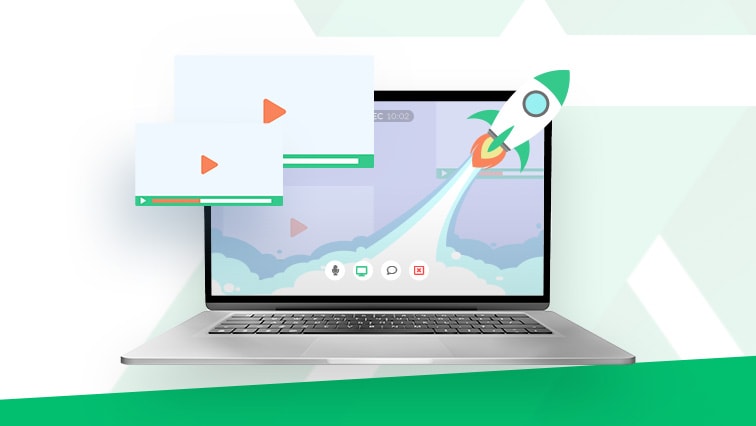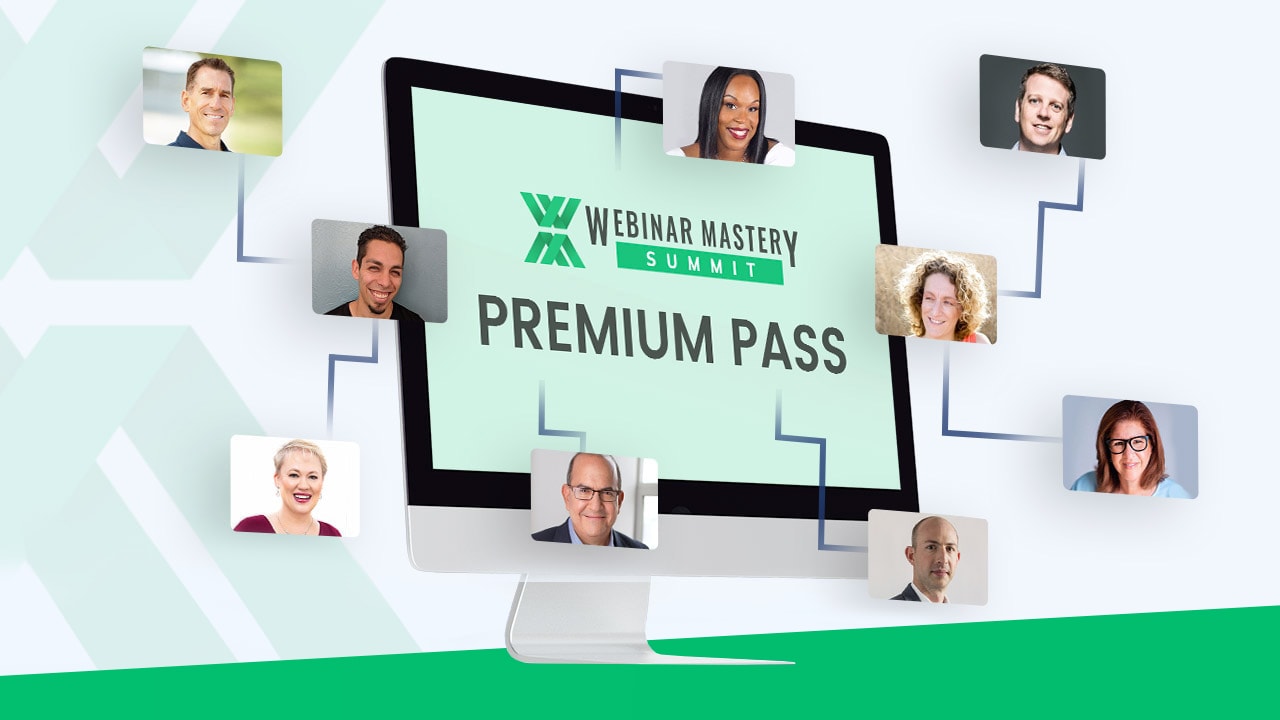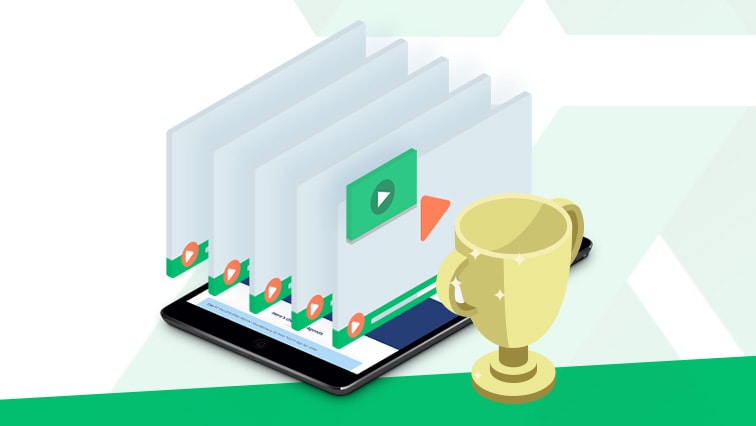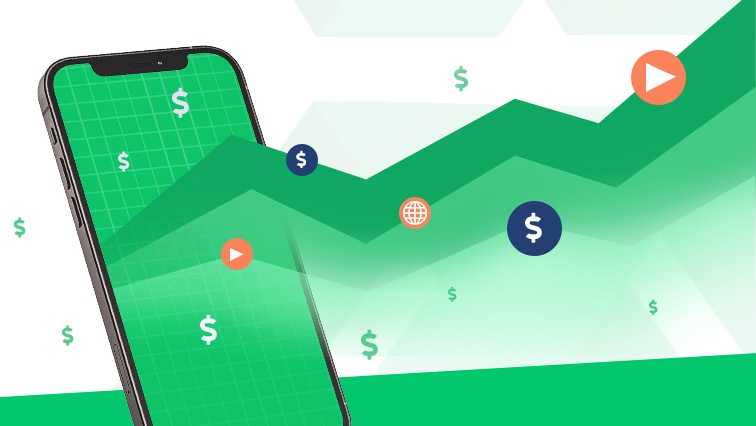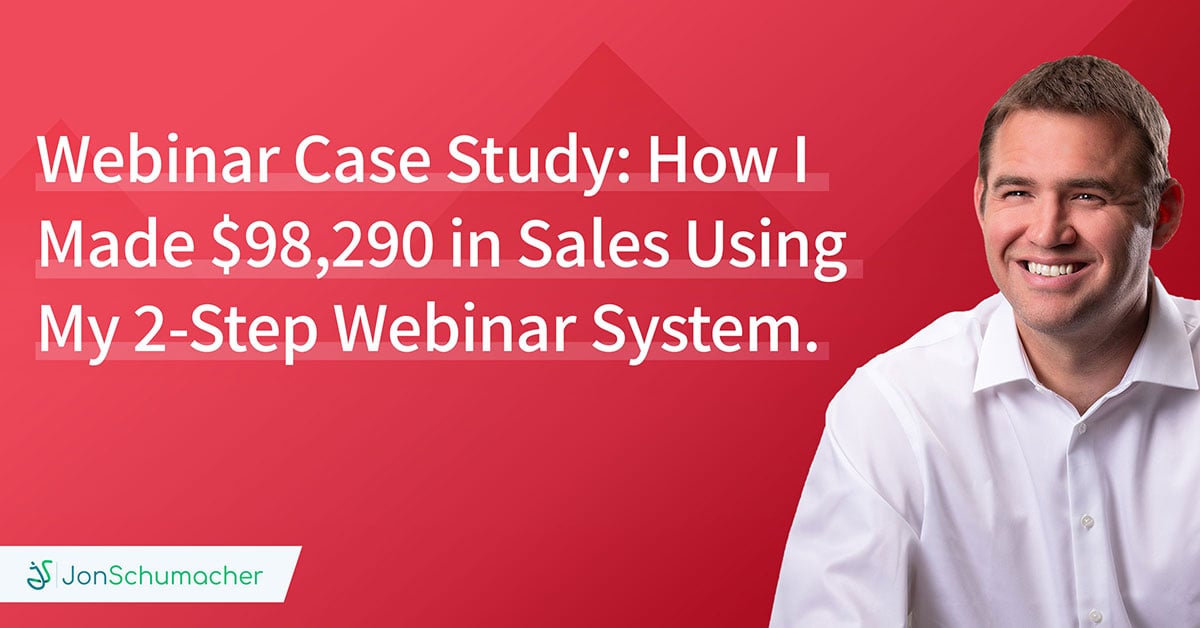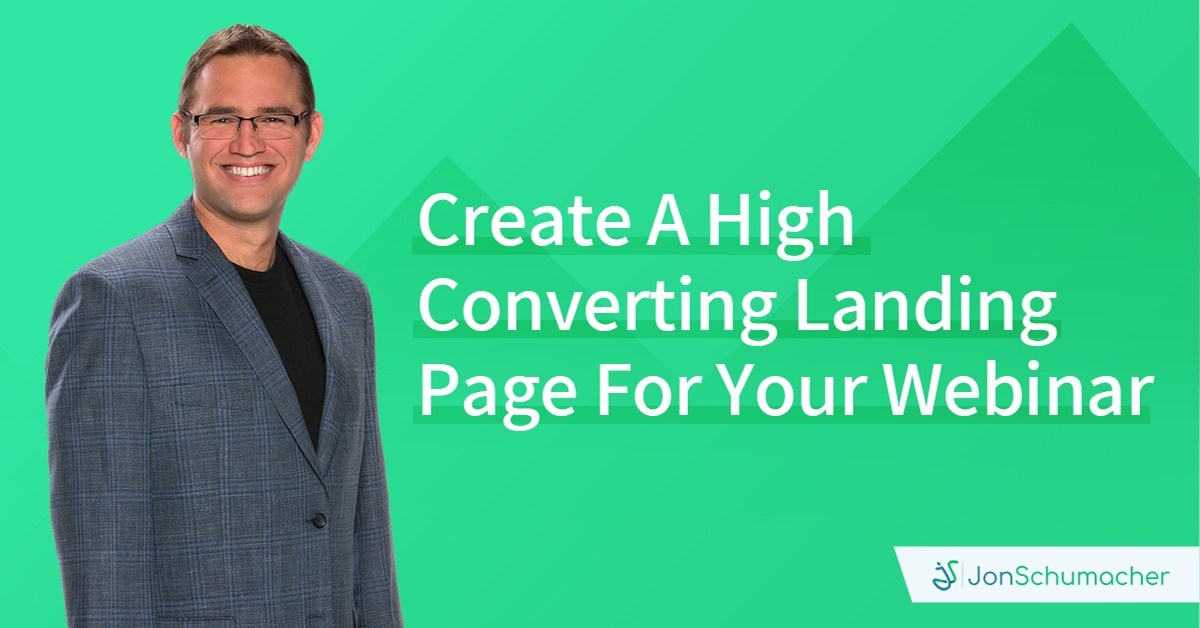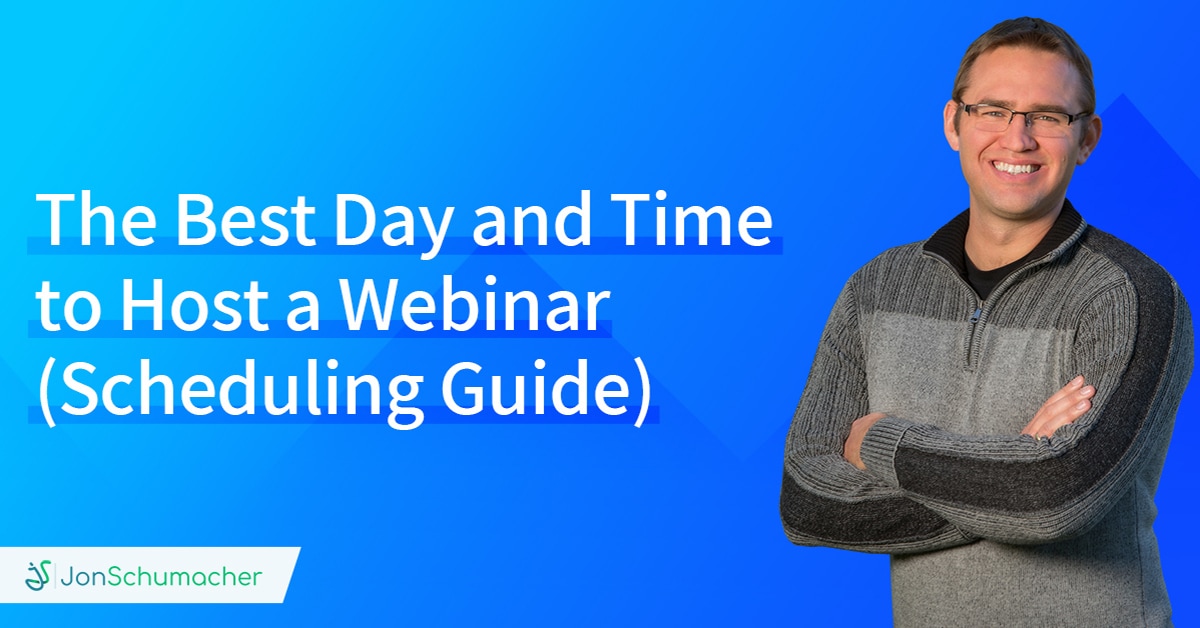For Coaches, Consultants, and Service Professions Who Want to Close More Sales with Less Resistance
If you’re a coach, consultant, or service provider and you’re not making the money you should be, one of the biggest reasons is your lack of sales skills. You don’t have a consistent process for enrolling more of the right kind of clients on your sales calls.
You’re great at what you do, but your sales process is spotty and inconsistent. You may even be winging it. Not a good idea if you want to be in business for long.
A colleague and mentor of mine Adam Urbanksi said in a recent Facebook post, “If you’re not consistently hitting $25K/month in your coaching or consulting business your biggest problem is sales not marketing.”
It’s true. It all comes down to making an offer and enrolling clients. That’s it. All the other noise is just complication taking you further away from what you need to be doing.
What should you be focusing on? The “Three Haves” below.
- Have an economically intelligent and well-structured offer that gets clients results.
- Have an effective sales process for enrolling more of the right kind of clients.
- Have as many conversations as you can with the right prospects.
From a client acquisition standpoint, that is it. Anything else is a distraction. Now, as simple as that sounds there are a number of nuances and some very deep strategies to each of those three.
In this guide, I’m going to show you how I’ve been able to close numerous 5-figure and even 6-figure deals by using a simple process that even non-salesy people like me can master.
While reading this Ultimate Guide to Sales Calls you will learn:
- My mindset for a successful sales call.
- The not-so-secret but often missing link that dooms your sales calls from the start.
- How you could double your enrollment rate using what I call “Pre-Call Marketing Assets.”
- A complete walkthrough of my “Pre-Call Sequence” which helps you build trust and remove objections before you even get on the call.
- How to structure your sales calls including what to say and in what order, without being scripted or pushy.
- How to effectively follow-up with prospects who go quiet.
My intention is for this guide to be the single best piece of content for consulting and service businesses who want to improve their close rate and shorten their sales cycle. I’ll be updating this post as I find new techniques that work for me. Make sure to save this guide for your own ongoing reference and share it with anyone you know who wants to close more clients with greater ease.
With that said, let’s jump into the guide.
My Mindset for a Successful Sales Call

There are a number of different philosophies on sales. Many I disagree with wholeheartedly. Yes, money is important. But it’s not the only thing that matters. People matter and I personally only want to work with the right clients. People I can help, people I enjoy, and people I can see myself working with over time. I am not out for the pressure close.
“If there’s one thing I’m not, it’s a salesman. I’m an educator and advisor.”
These are the words my father always tells me when I ask about his success in building a multi-million dollar insurance business. He has always been a top performer but has never used the sleazy, manipulative pressure tactics so many sales gurus teach and use. For dad, it was always all about creating relationships and trust.
If you want to standout from the crowd of “high-ticket closers,” and win better quality clients, be an educator and advisor, not a sales person out to make your numbers at all costs.
Do what consulting legend, and author of Million Dollar Consulting Alan Weiss calls building “breakthrough relationships” with your best prospects. You can check out a full 30-minute interview I did with Alan on the topic here.
I regularly turn away or refer out prospects who aren’t a good fit for working with me. I often talk them out of what I could be selling them because they aren’t in a position to fully utilize it. Always look out for people. Have their best interest in mind. I can tell you from some very painful experiences, that taking on the wrong clients, even with good intentions, leads to headaches, hurt feelings, and a hit to your reputation. I’ve been there more than once.
Have the mindset of a trusted advisor, a partner, and not a pushy, desperate sales person and you will win more and better clients over the long run.
The Missing Link to Your Sales Call Success
If there’s one missing piece to your sales process that costs you more deals than any other, it’s this one. Add this piece to your sales process and watch your enrollment rate improve dramatically with much less resistance from your prospects.
What’s the missing piece?
It’s what I call the “Pre-Call Sequence.” What happens BEFORE your call is the key to your success ON the call.
If you book clients on your calendar and there’s nothing for them to consume before your call, you’re starting each of your sales calls with twice as many objections and twice the level of prospect uncertainty as you could be. You’re placing yourself in an uphill battle.
Your sales call should not be about convincing someone to buy from you. That should happen before the call. It’s your marketing that sells them on you. Your sales call is your chance to build rapport, confirm you can help them, make sure they’re clear on what working together looks like, and to make a decision.
Here’s a quick story of how my Pre-Call Sequence helped me close a recent little 5k engagement.
I have content all over the internet. Besides referrals, most of my inbound leads come from search results on Google or from my Youtube channel. Facebook is also a common source.
I recently received an application to work together from a coach in Pennsylvania. She had Google searched “webinar expert” and I came up #1 in her search. She then went to my website. On my site, she found a lot of content but specifically a video of a speech I gave at a leading marketing conference. She watched a portion of that video. She then went to my blog and read a couple of articles.
She decided to book a call on my calendar and fill out my application to work together. After submitting her application she was taken to a page where I had several videos for her to watch before the call. I also had “Netflix” type content (more on this later) where she could binge watch some of my best content prior to the call. I had videos, testimonials from clients, audio interviews, and my column for Entrepreneur.
I got her application and reached out via email directly. We had a few short back and forth exchanges. From her application, I could tell that she was looking for someone to review her webinar funnel. I sent her a video of my Webinar Growth Audit process. She watched the entire video and understood my process before our call.
By the time she was on the call with me, she had watched 6-7 videos, had three back and forth exchanges with me via email and was all but sold before even talking with me on the call.
On the call, we talked for 30 minutes to confirm what she was looking for help with. I met with her on Zoom and once again, took her through my Webinar Growth Audit offer using a slide deck, or what I call a Demo Deck (more on this soon). At the end of the call, I asked her, “What would you like to do next?” She said, “get started.”
This lady had never heard of me the day before. By the time she got to the call, she saw me as an authority, had built some trust with me, and was all but sold before we even spoke. This is the kind of Pre-Call Sequence you want to have in your sales process.
I will go into more details of the Pre-Call Sequence further down this guide.
To Use Phone or Video Conferencing?
If your prospect demographic is decently tech savvy, meeting on your video conference line instead of your phone will help you close more deals. It has for me.

If you’re running cold traffic you can take your 15-minute call to qualify and THEN move to a video conference line for your longer strategy session.
The amount of rapport you can build when meeting virtually face to face is a tremendous advantage. Meeting on a video line also allows you to share your screen and a slide deck (Demo Deck) to visually walk your prospects through exactly what you can do for them.
I strongly recommend doing your sales calls on a video conference line like Zoom. You will close more deals.
Pre-Call Marketing Assets
In order to have an optimal sales process, you want to create a few marketing assets that you can leverage prior to and during your sales call. The following are those assets as well as the details for each.
Testimonials
If you aren’t collecting testimonials from your clients on a regular basis, you need to start now. Video is best and screenshot images are second best. Make sure to collect both if you can.
Create a web page that houses all your video and text testimonials. You can also create a Youtube playlist for your video testimonials like this one. This is an example of “Netflix” content that your prospects can binge watch before your call.
Not all testimonials are created equal and many of your clients will need some coaching to give you a good one.
Here is an outline I share with my clients to help them:
My name is _. I’m from __ (city and state).
I am a __. (profession) and I help _ (your customer) do __ (what results do they get).
____________________________ (share a problem or challenge you were having prior to work with me.)
_____________________________(describe how things have been while you were having this problem. ie: wasting time or money, never seeing kids, not taking full advantage of your business).
______________________________ (describe what happened after working with me. (ie: I worked with Jon and I had my product launch up and running in less than 2 weeks, use numbers).
______________________________ (describe how things are now. (how much more money you are making, or traffic you are getting, or even how much you learned, be specific).
______________________________ (describe your current state of contentment after working with me.)
Authority Content
Have you been featured on TV or a podcast? Maybe in an article for a well-known publication. Use these features as authority content in your Pre-Call Sequence.
Have a web page like this one that you can share with prospects after they book a call with you. This page can house some of your best authority content in one place. Even if your prospects don’t watch everything from start to finish, they will still be impressed with the amount of third party content you’ve been featured in.
If you haven’t been featured on many podcasts or TV interviews, simply use a few videos of your best content. The goal is to do what I call, “Netflixing” them. We want them to binge-watch a lot of you before the call. The more they watch, the more likely they are already sold on working with you. They are micro-committing to you by watching and giving you their time.
Video of Your Offerings
Record a slide presentation outlining the agenda of your call, some case examples of results you’ve gotten your clients, and your key offerings. Don’t share the price before talking with them on the call. If you want to give a price range you can. For example, “I have offers that range from $5k-$100k+.”
Here is an older example of my Webinar Growth Audit (video)
Here is an example of a Run-For-You offer I was making to corporations (video)
PDF Brief of Your Offerings
Sometimes you will have someone ask for a brief or short summary of your services. Particularly if you’re prospecting on a B2B platform like LinkedIn where business owners are busy and want a fast snapshot of your offerings. I don’t use it often but do have a brief to share if someone asks.
Demo Deck
This is a complete game changer. If you want to do one thing to improve your sales calls besides the Pre-Call Sequence, it’s this. Start using a slide deck to visually demonstrate your offerings and the outcome your offerings create on your video conference line.
Here are a couple of example Demo Decks
You should have a Unique Process that you take your clients through to get them results. Make sure to outline that process step-by-step when you explain your offering.
Make sure to point out the benefits and the expected outcomes as well. Clients buy the OUTCOME your process gets them, not the process itself. Read that again. Make sure to clearly talk about THEIR potential outcomes while you share your process.
Note: For a full outline of the Demo Deck see the “My Current Sales Call Outline” section below.
Pre-Call Sequence Walkthrough

If you’ve read my article on the Ultimate Guide to Application Funnels you’re familiar with my Top Ten Filter Funnel (TTFF). Please review that guide for more details on the front end of the process if you’re using webinars and VSLs.
In this section, I will discuss in more detail what should happen between the Pre-Frame Page and the Enrollment Call using some different scenarios. Prospects will come to you from different sources like referrals, your website, social media, etc. The way you interact with them will change based on that source. I will discuss these distinctions below.
Scenario #1: You get an inquiry from your website or an ad funnel
In this case, someone comes to you cold from some type of traffic source and books a call on your calendar. They then fill out a questionnaire. What should happen next?
The next thing they should reach is your Pre-Frame Page.
Your Pre-Frame Page does a few things.
- It starts the pre-framing process so that your prospects see you as a trusted authority.
- It encourages micro-commitments.
- It furthers the indoctrination process.
I have a video at the top of my Pre-Frame Page congratulating them on filling out their questionnaire and then telling them what to do before the sales call. It’s important to get your prospects to consume as much authority building content as they can. Videos, articles, interviews, and speeches that are relevant to your offer. Make sure to set the agenda for the call on this page as well. Here’s an example.
After leaving your Pre-Frame Page, they will receive a series of email reminders from your scheduling software.
The goal of these emails is to…
- Further pre-frame your prospects and get them to consume authority content and testimonials prior to the call.
- Remind them about the call so they show up.
- Give them the agenda for the call.
For your swipe file, here’s my current pre-call email copy. I send this out right after someone books a call. I have reminders with similar messaging at 24 hours, 1 hour, and 10 minutes prior to call.

I have received your booking for your [Name of Your Call].
If you have yet to fill out the questionnaire, this is REQUIRED to secure your call with me.
Click here to fill out the questionnaire > [Link to Your Questionnaire]
Before our call, I want you to do ONE thing, do your due diligence on me.
Put my name “Jon Schumacher” into Google and start reviewing the many interviews, videos, and presentations I have done.
To help you, here are a few pieces of content for your review > [Link to Pre-Frame Page].
Here is a list of testimonials > [Link to Testimonials]
During our call, I will have a number of questions to ask you. I am nice but a straight shooter and only want to partner with the right clients, so there will be no hard pressure to enroll, only finding out if you are a good fit.
The Agenda of the Call Will Be:
- I will ask about your current situation and goals.
- I will lay out a big picture plan for how to get where you want to go.
- If I feel like working together makes sense, I will make you an offer to do so.
This isn’t a “pick my brain” type call. This is a call to see if working together makes sense. So please be serious about working together if you are coming to the call.
Looking Forward!
Jon
I read all my applications to see if I want to take the call or not. I cancel more than I take as I’m only looking for the most qualified prospects. If you are at this stage, do the same. If not, then take more calls so you can practice the process.
I will often send qualified prospects a personal email message and some additional content based on their questionnaire. Again, I want them to consume as much of my content before the call as they can.
Scenario #2: You Get a Referral
Nothing is better than having someone send you an email or Facebook message to tell you that they have someone who needs your services. Referrals are always the easiest to enroll because there is transferred trust from the person making the referral.
So in this case, should you send people through your funnel? I wouldn’t. Do you have them fill out a questionnaire? I have colleagues that do that. It’s not wrong but I don’t do that either. So what do I do?
I do a little back and forth via email or private message. I ask a few questions. If I know they’re financially qualified or at least have a good chance of it, I don’t put referrals through my application funnel. I keep it personal. Some back and forth and then booking a call. After finding a time, I often send them some authority content to review. Sometimes I will send them my Pre-Frame Page so they can binge watch. Sometimes I will send a video of me speaking and my Youtube testimonial playlist. Even though they are a warm referral, I still want them “Netflixing” my content before our call.
The key with referrals is to keep it even more personal. A good friend and respected colleague referred them over. Often times these are your warmest most qualified prospects so keep it light and friendly but also make sure they have seen some of your content and in some cases a video of your offerings before the call.
Scenario #3: You Get an Organic Lead
Let’s say you’re posting on Facebook or LinkedIn regularly and someone reaches out to you interested in your offer. Or you are doing outbound LinkedIn prospecting with a predefined saved list from Sales Navigator.
I tend to handle these in a very personal way as well. Similar to a referral. I have a back and forth conversation with them. Ask a few questions about what they are looking for help with. If it is an inbound inquiry, I have the conversation via email or messenger first and book a call after. If it’s outbound LinkedIn, I often already know in most cases that they are qualified from my predetermined saved list from Sales Navigator.
Either way, I look to get to a conversation, usually a call and send them my authority content beforehand.
The big takeaway is to be human in your process. Have some back and forth no matter what the lead source. With colder leads who come through your website or funnel, do a bit more filtering and automation. With those who come from organic or via referral, use a less automated approach. Be a human and care and you will get more and better clients than if you treat them like a number inside of your lead generation machine.
My Current Sales Call Outline
Preparing for the Sales Call
I practice my script outline on a regular basis prior to sales calls and you should too. Before each call, I have a blank sheet of paper on my deck. I have the outline you’re looking at right now on my computer screen. On the sheet of paper, I write down the top three offers I would like to make based on their questionnaire if I have one. If I don’t, I write down my top offers that I normally sell.
During the call, make sure to listen a lot and let them tell you what they want help with. Then use what they share to sell your program. LISTEN more and talk less but do keep control of the conversation by asking good questions.
Below is my current sales call outline. It works. Feel free to swipe it and let me know how it does for you during your next few calls.
Rapport (1-2 minutes)
I like to spend the first few minutes making small talk.
“How are things in [their location].”
“How long have you been in business?”
If they’re chatty, I will talk a bit more about personal things. I’m a personal person and like my clients to be as well. If someone is curt, rude, and only wants to get to business, that’s a red flag for me. I see myself as an advisor and partner, not some vendor for them to order around.
Set the Agenda and Seed Your Offer
After some small talk, take control of the conversation by setting the agenda. While you want to mostly listen and take notes during this part of the sales call, you do want to keep control by asking questions.
“During these calls, I have a few questions to ask you. I want to find out where you are now, where you want to go, and what you feel you need help with. If I feel like I can help you, I’ll share how we can work together at the end of the call. If not, I’ll try to point you in the right direction. Does that sound good?”
Where They are Now (Building the Bridge Part 1)
After setting the agenda and seeding your offer, you want to start the process of building the NOW and WHEN Bridge. This first part involves finding out why they reached out to you, specifically why right now, and what problems they’re currently experiencing. Take notes on your blank page and write down their top problems so you can link your program as the solution to those problems later on in the conversation.
“So what caused to you reach out to me specifically right now? What challenges are you currently experiencing?”
Where They Want to Go (Building the Bridge Part 2)
Now that you have a few notes on some of their biggest problems and why they reached out to you, you want to ask them about where they want to go. Again, take notes on your blank page.
“Thank you for sharing, so you’re currently experiencing [insert problem #1, problem #2, problem #3], where would you like to be in, let’s say, 90 days to 6 months time (length of your core offer)?”
What They Feel They Need Help With?
Now that we’ve defined their NOW and WHEN Bridge, we want to know the obstacles that are sitting on that bridge that we can help remove. We now ask them what they want help with. Again, take notes.
“Got it. So what do you feel you need help with to get there?” What do you feel is stopping you?”
Recap and Give Your High Level Prognosis
Just like a doctor asks questions to come up with a diagnosis for an illness, you now have your initial information for diagnosing their situation. Give a brief recap of their NOW and WHEN Bridge and the obstacles on their bridge. Then give your prognosis (the forecast of what is likely to happen if they continue on their current path).
“Got it. So based on what you shared with me, you’re currently doing [insert current results] and you want to get to [insert desired outcome] but you feel like [obstacle #1, obstacle #2, and obstacle #3] are getting in your way. Is that right?”
“I can see what the issue is and it’s [insert issue]. It’s something that can be addressed and if you don’t address it you will likely continue to experience [insert problems].”
Does This Make Sense?
Ask them, “Does this make sense? Do you feel if we shifted this it would help you reach your goals?”
This gets them to either agree or disagree with your prognosis before you share your offer.
Share Your Offerings with Your Demo Deck (8-10 Minute Presentation)
Note: See the “Pre-Call Marketing Assets” section for example Demo Decks
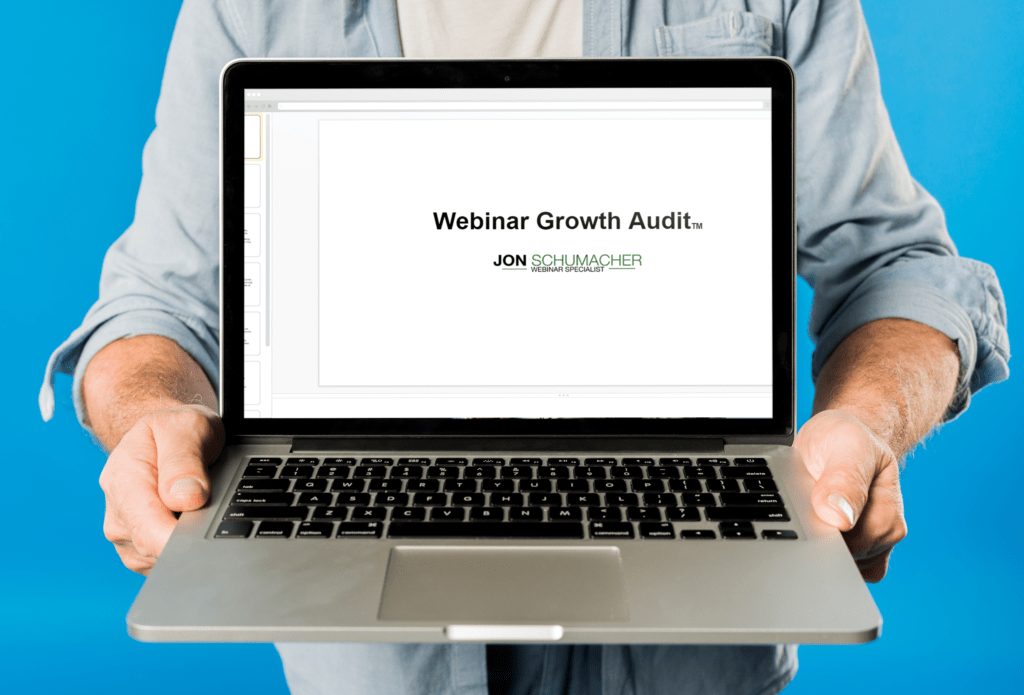
I’ve done my fair share of sales calls on the phone over the years. What I’ve recently found is that using a video conference tool like Zoom coupled with what I call a Demo Deck dramatically improves your enrollment rate. Some niches that are non-techie can struggle to get their prospects to a Zoom call in which case you would have to stick with your phone.
“Let me show you a visual walkthrough of [insert offers], share some examples of what is possible for you, and the step-by-step process of what that would look like. Is it okay if I bring up a brief slide presentation?”
Presentation Flow for Demo Decks (I used Google Slides with white slides and my logo in the lower left corner)
- Start With the High Level Outcome.
- So ultimately what we’re doing is helping you [insert benefit to them]” (what they are there to buy)! Always remember to sell the OUTCOME of them being a better version of themselves if you’re a coach. Read that again coaches. Use the NOW and WHEN Bridge items they shared with you and talk about how your offer will help them solve those challenges.
- Share Case Examples of Clients Who’ve Gotten Similar Results Working with You.
- Walk Them Through the Step-By-Step of Your Unique Process for Getting Them Those Results.
- BRIEFLY Share the Logistics of Your Offering (length of the program, # of calls etc.).
- Share Your Pricing Including Incentive Based Pricing if You’re Using Any.
The Close
At this point, we have a deep understanding of where they are, what they want help with, what obstacles are in their way and we’ve shown them what’s possible in a very clear, visual way. Now, all we have to do is simply ask for the sale. The following phrases are some that I use at this point to drive a decision:
“Would you like me to help you with this?” OR “What’s a good next step for you?”
Addressing Objections
You’re now at what my colleague James Tuckerman calls the “Pointy End” of the sales call.
You’ve shared the investment and made the direct ask. “Do you want to work with me?”
Some will respond with an “I’m in!” In which case you get them an invoice and start your onboarding process.
But most will have a few questions or even objections that you’ll need to navigate if you want to work together. When it comes to objections, there are universal objections like money and timing and there are product specific objections. You want to take some time to write out all your potential objections with a corresponding answer that you will use. Practice asking and responding to these in the mirror until you know them by heart.
Money Objections
For many markets, this will be the #1 objection you will get. Many sales trainers will tell you to push people by reiterating how important it is to solve their challenges. Sometimes you do need to push people you know you can help.
What I do more often is to acknowledge their objection and down-sell. When I work with clients to craft their offerings, I always help them build THREE different offerings around ONE core program or service. That way they can down-sell to the appropriate offer if needed.
You can say:
“I get that it’s a sizable commitment.” “That’s why I’ve created more economical versions. Would you like to hear about those options?”
Timing Objections
Timing can be one of the hardest objections to overcome. There are times when the timing may truly be off. In which case, look to schedule a follow up meeting on an agreed upon date in the future.
What timing objections often mean is that they aren’t willing to prioritize your offer over the other things they’re doing.
A key phrase you can use is “How long do you want to continue down the road you’re on?”
If you did a good job of getting them to agree that your offer is the answer to what they need, you can overcome the timing objection.
Offer Fit Objections
Not being sure that what you’re offering is exactly what they need is another objection you may run into. Again, if you did a good job earlier in the sales call you shouldn’t be getting this but if you do, you can bring up something like the following.
“Earlier in this conversation you seemed to agree that what I shared would help solve your problem, do you still feel this is the case?”
If they agree, ask if there are any other reasons why they feel the offer may not be a fit for them.
I Think I Can Do This Myself
Occasionally you may describe your offerings and hear, “I think I can do this myself.”
I remember talking with a very smart marketer who wanted me to audit his webinar. He said those words to me. Here was my response. You can use this any time someone brings this up.
“You know, you ARE a smart person and likely could figure this out on your own. But let me share this, Tiger Woods is arguably the best golfer of all time. Yet he has several coaches, all knowledgeable but none better at golf than him, who he pays good money to give him outside eyes and knowledge on his performance. All the high performers do this. If they do it, you may also benefit from hiring another smart person to help you reach your goals.”
He was instantly sold and started working with me.
I Need to Think About It
This is one of the more common objections. One of my favorite sale trainers Victor Antonio has a great video you should watch here.
Here’s what Victor says to say when you hear “I need to think about it.”
“So usually when people say they need to think about it, they’re either being nice and not interested, or they’re interested but just not sure about something. Maybe I didn’t cover something well enough. Which is it for you?”
You want to get to the REAL objection and not be guessing. It may be money. If so, you can address that. Maybe they’re unclear on whether your offer will work in their specific situation. Find out.
If they do need to think about it more, use the following phrase.
“Okay, how much time do you think you need to think about it?”
Set that next appointment on the call.
I Need to Talk with My Partner
For colder inquires like website, content, or ad leads, I have a question on my questionnaire that covers this. If they do need time to talk with their spouse or partner use the same language.
“Sure, how much time do you need to talk with your partner?”
Or better yet start with this question,“Okay, no problem. Is there anything else you aren’t sure about that we can discuss right now to clarify?”
If they need more time to talk with someone, set a meeting time on the call which falls right after when they will be able to talk with their partner.
I Need to Move Some Money Around
Similar approach as above.
“Sure how much time do you need to do that?”
Set a follow up meeting on the call.
Above are all universal objections you should be prepared to handle. Write out your responses to these objections and practice. You will feel more prepared and confident when they come up. In addition to these universal objections, you should write out your product specific objections.
Examples of product specific objections can include: That is too technical for me. I have tried [insert your offer type] before.
Fortune in the Follow Up
As much as we would love for the right clients to jump at what we offer, they aren’t always going to do so. There are times when loose ends happen or someone goes silent on you. It happens to us all.
The best practice is to not have loose ends and make sure to set the next meeting or have some kind of decision due date shortly after your initial sales call. Always go from scheduled meeting to scheduled meeting if possible.
In my experience, when a prospect goes silent, they’re usually not a serious buyer or I did a poor job qualifying them or making a strong case for why they should work with me.
Yes, follow up is important, and I have some templates for you below, but in my experience, if you have to follow up more than a couple of times, the odds are low your prospect is going to move forward with you. In this case, don’t focus too much energy on them. Move on and keep your pipeline full.
If they respond and say the timing is not right but they’re interested, book a call on your calendar and send an invite for an agreed upon date in the future.
Below are two sets of follow up messages you can send to those who go silent. People do get busy so it’s worth sending a couple messages to give your warmest prospects a nudge.
Note: Credit for some of these templates go to Steve Gordon of the Unstoppable CEO and Travis Sago
Follow-Up #1 – “Next Step” Message
When to send: 2-3 Days after they didn’t get back with you.
Subject: Next Steps
[first name],
What’s the next step on the [name of project] project?
[your name]
Follow-Up #1b – 9 Word Email
When to send: 2-3 Days after they didn’t get back with you.
Hi [first name],
Are you still interested in [insert the benefit of your offer]?
[your name]
Follow-Up #2- “Closing the Loop”
When to send: 7-10 days after previous message
Subject: Closing the loop
[first name],
Since I haven’t heard from you, I assume you’ve gone in a different direction or your priorities have changed since we spoke.
Feel free to reach out if we can help you in the future.
Best,
[your name]
Follow-Up #2b- “Backburner”
When to send: 7-10 days after previous message
Subject: On the Backburner?
[first name],
I haven’t heard back from you so I’m assuming you’re putting this on the backburner?
[your name]
Well there you have it.
A complete process to doubling or even tripling your sales call enrollment rate.
The biggest takeaways for you are:
- Leverage your authority content in a well thought out Pre-Call Sequence. What happens BEFORE the call makes or breaks you.
- If your prospects are technically able, use a Demo Deck to close more deals on your video conference line. Make sure to talk about the projected outcomes of their specific situation using your Unique Process. People buy a better version of themselves as an outcome of your process.
- Use the scripts and outlines in this guide to help you know what to say and when during your sales calls and follow-up. Save this guide for future use and share with others.
I hope you found this to be the most comprehensive and detailed guide to improving your sales call enrollment rates. I strive to be a straight shooter who holds nothing back.
Want more support in applying my sales enrollment system in your business? Email me at jon@jonschumacher.com and tell me about your business.
While the sales enrollment process is a critical piece to growing your coaching, consulting, or service business, there are other equally important pieces to the equation. Your offer suite being one. The ability to generate enough qualified appointments with prospects is another.
I regularly work with a small number of experts like you to help you optimize your high-end offer and attract and enroll more clients. If you’re interested in talking with me about this, email me at Jon@JonSchumacher.com and tell me about your business and goals.
And pass this guide onto anyone who wants to close more deals.
Leave me a comment below with any questions or takeaways and I will be sure to respond to each one.
Thanks for reading!
Jon Schumacher
President of Marketing Mastery Media INC and JonSchumacher.com


